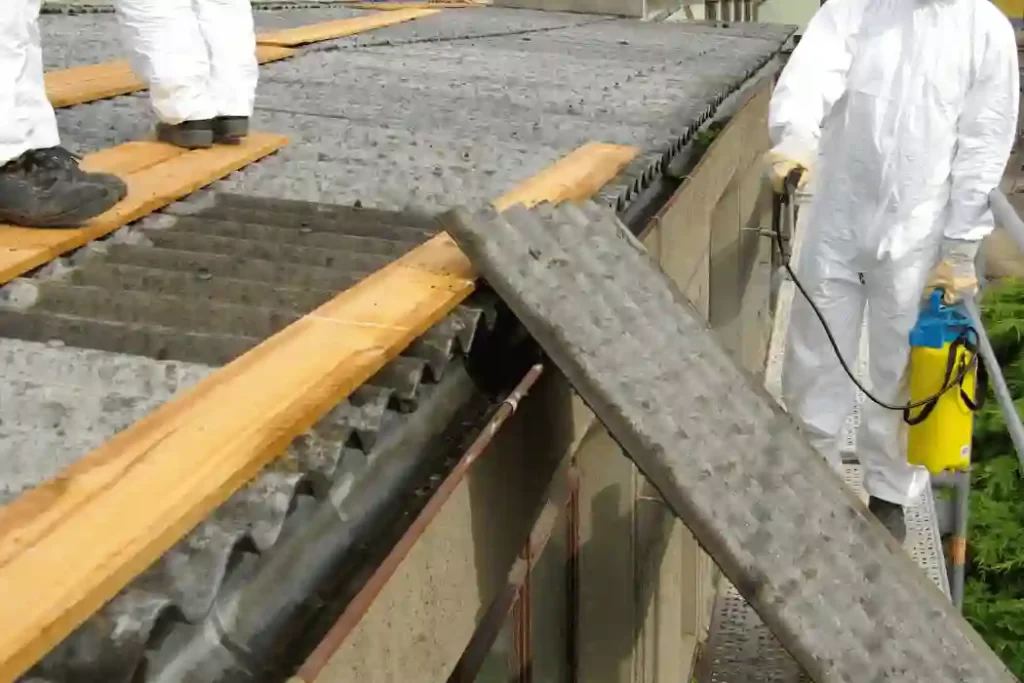Asbestos is a group of naturally occurring minerals that were widely used in various industries due to their desirable physical properties, such as heat resistance, durability, and chemical inertness. However, it is now widely recognized as a hazardous substance that poses serious health risks to human beings and the environment. In this article, we will explore the impacts of asbestos on the environment and discuss some of the solutions to mitigate its negative effects.
Impacts of Asbestos on the Environment
Asbestos is a naturally occurring mineral that can be found in rocks and soils. When it is disturbed, either by natural weathering or human activities such as mining, construction, or demolition, asbestos fibers can become airborne and easily contaminate the environment. The inhalation of these fibers can cause serious health problems, such as lung cancer, mesothelioma, and asbestosis, which can take years or even decades to develop.
However, asbestos not only poses a threat to human health but also to the environment. Asbestos fibers are highly resistant to degradation and can persist in the environment for decades or even centuries. They can also accumulate in soil, water, and air, leading to widespread contamination and ecological damage.
When undertaking home renovation projects, it is crucial to be aware of the dangers posed by asbestos, a hazardous material commonly found in older buildings.

Soil Contamination
Asbestos fibers can contaminate soil in several ways. One of the most common ways is through the disposal of asbestos-containing waste in landfills. Asbestos waste can also be illegally dumped in the environment, such as in vacant lots or rural areas, leading to soil contamination. Asbestos fibers can also be transported by wind and water, and deposited in soil, where they can persist for long periods.
Soil contamination by asbestos can have severe impacts on plant growth and soil microorganisms. Asbestos fibers can affect the water-holding capacity of soil, reducing its fertility and leading to reduced crop yields. Furthermore, asbestos fibers can also negatively impact soil microorganisms, such as bacteria and fungi, which are crucial for maintaining soil health.
Water Contamination
Asbestos fibers can also contaminate water sources, either by direct discharge from industrial activities or through the leaching of asbestos fibers from soil into groundwater. Asbestos fibers can accumulate in water bodies, such as lakes and rivers, and persist for long periods. This can pose a threat to aquatic organisms and humans who rely on these water sources for drinking and other purposes.
Air Pollution
Airborne asbestos fibers can be a significant source of pollution, particularly in areas where asbestos-containing materials are disturbed, such as during construction or demolition activities. These fibers can be carried by wind and can travel over long distances, posing a threat to public health and the environment.
Solutions to Mitigate the Negative Impacts of Asbestos
There are several solutions to mitigate the negative impacts of asbestos on the environment. Some of these solutions are discussed below.
Proper Management and Disposal of Asbestos-Containing Materials
One of the most effective ways to mitigate the negative impacts of asbestos on the environment is to properly manage and dispose of asbestos-containing materials. This involves identifying and removing asbestos-containing materials from buildings and other structures and ensuring they are disposed of in a manner that minimizes environmental contamination.
Asbestos-containing waste should be disposed of in a licensed landfill that is specifically designed and engineered to handle asbestos waste. This involves packaging asbestos waste in sealed containers and labeling them as containing asbestos to prevent accidental exposure. Furthermore, landfill operators should take measures to prevent the release of asbestos fibers into the environment, such as covering the landfill with a membrane and regularly monitoring the air and water quality around the landfill.
Asbestos Remediation
Asbestos remediation involves the removal or encapsulation of asbestos-containing materials from buildings and other structures to prevent exposure to asbestos fibers. This can involve the use of specialized equipment and techniques to safely remove asbestos-containing materials without releasing fibers into the air. Encapsulation involves covering or sealing asbestos-containing materials to prevent the release of fibers. Asbestos remediation is a complex process that requires specialized expertise and should only be carried out by licensed professionals.
Regulation and Enforcement
Effective regulation and enforcement can help to prevent the illegal disposal of asbestos-containing waste and promote proper handling and disposal of asbestos-containing materials. Governments should enforce regulations that require the proper management, handling, and disposal of asbestos-containing materials. Penalties should be in place for violations of these regulations to deter illegal disposal.
Education and Awareness
Education and awareness can help to prevent exposure to asbestos fibers and promote the proper handling and disposal of asbestos-containing materials. The public should be educated about the dangers of asbestos and how to identify and manage asbestos-containing materials. This includes informing people about the risks associated with asbestos exposure and how to protect themselves from exposure.
Research and Innovation
Research and innovation can help to identify new and effective ways to mitigate the negative impacts of asbestos on the environment. This includes developing new technologies for the safe removal and disposal of asbestos-containing materials and developing new methods for detecting and monitoring asbestos in the environment.
Conclusion
Asbestos is a hazardous substance that poses serious risks to human health and the environment. The negative impacts of asbestos on the environment include soil and water contamination, air pollution, and ecological damage. However, there are several solutions available to mitigate these negative impacts, including proper management and disposal of asbestos-containing materials, asbestos remediation, regulation and enforcement, education and awareness, and research and innovation. By implementing these solutions, we can reduce the negative impacts of asbestos on the environment and protect human health and the environment from its harmful effects.

